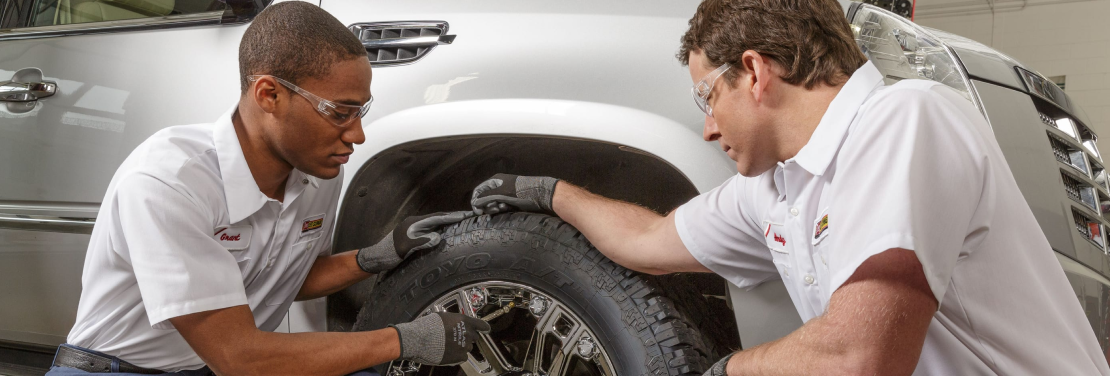Tire Solution: Understanding Tire Pressure Tracking Equipments
Comprehending Tire Stress Surveillance Equipments (TPMS) is a crucial facet of maintaining ideal car performance and safety on the roadway. With developments in automotive innovation, TPMS has come to be a typical function in contemporary cars, giving real-time information on tire pressure degrees.

Importance of TPMS
The importance of Tire Pressure Tracking Equipments (TPMS) lies in their capability to enhance car safety and security and efficiency via real-time monitoring of tire pressure levels. Preserving the right tire stress is vital for making sure optimum handling, stopping, and total safety and security of a car. TPMS supplies motorists with instant responses on any kind of underinflated or overinflated tires, allowing for timely adjustments to be made.
Elements of TPMS
Consisting of various crucial aspects, a Tire Pressure Surveillance System (TPMS) functions as an advanced security attribute in modern-day vehicles. The primary parts of a TPMS consist of sensing units, a control module, and a caution indication. Sensing units are commonly located in the tire valve stem or connected to the wheel assembly, where they measure tire stress and transmit information to the control component. If it finds significantly low stress in any of the tires, the control component procedures this information and causes a warning. The caution indication, frequently a sign on the control panel, alerts the vehicle driver to examine the afflicted tire or tires. Some advanced TPMS designs also present the real tire stress readings for every tire, providing motorists with real-time information to make certain optimal tire performance and safety. By checking tire stress continually, TPMS aids prevent accidents, decreases tire wear, and improves fuel efficiency, making it an important element for lorry safety and security and efficiency.
Sorts Of TPMS

On the other hand, indirect TPMS counts on the vehicle's wheel speed sensing units to check tire stress. This system spots underinflation by comparing the rotational speeds of the wheels. Indirect TPMS is less pricey than direct TPMS, as it utilizes existing sensors within the vehicle.
While straight TPMS provides extra exact analyses, indirect TPMS is less complex in layout and typically calls for less upkeep. Both systems have their benefits and restrictions, and the choice between them often depends on elements such as expense, automobile make, and personal preference. Understanding the differences in between these 2 kinds of TPMS can aid lorry proprietors make notified decisions relating to tire upkeep and security.
TPMS Upkeep Tips
Conduct regular checks on the tire pressure levels and contrast them with the TPMS readings to ensure they are regular. During tire rotation or replacement, make sure that the TPMS elements are managed meticulously to stop any prospective damages. If the TPMS advising light illuminates on the control panel, attend to the concern immediately by inspecting the tire pressures and the general system for any mistakes.
Benefits of Proper Tire Stress
Preserving proper tire stress, as emphasized in TPMS Maintenance Tips, is vital for gaining the numerous benefits related to ideal tire stress degrees. Among the key advantages of maintaining the correct tire pressure is boosted fuel efficiency. When tires are properly blown up, there is less moving resistance, causing better gas economic climate. Additionally, proper tire pressure makes sure even tire wear, expanding the lifespan of the tires and advertising more secure driving conditions. With the ideal tire stress, automobiles also have much better handling and traction, particularly in adverse climate conditions. This can enhance total driving performance and security for the driver and guests. Furthermore, keeping optimal tire pressure can add to a smoother and extra comfortable ride by lowering vibrations and sound triggered by underinflated tires. To conclude, the advantages of proper tire stress exceed just tire longevity; they incorporate boosted fuel efficiency, improved security, much better vehicle efficiency, and general driving convenience.
Final Thought
In final thought, recognizing tire stress tracking systems (TPMS) is important for preserving optimal tire pressure and guaranteeing automobile security. By acknowledging the value of TPMS, recognizing with its elements, understanding the different kinds offered, adhering to appropriate maintenance tips, and understanding the benefits of keeping appropriate tire stress, vehicle drivers can boost their driving experience and extend the life-span look at these guys of their tires. Correct tire stress is essential to secure and effective automobile operation.

Comments on “Economical Discount Tires Morris IL: Unsurpassable Rates, Quality Guaranteed”